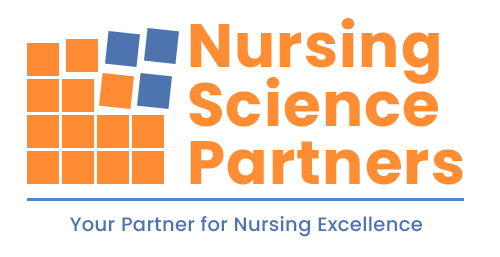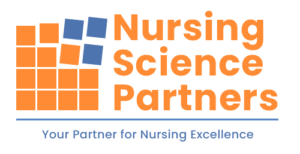

The healthcare industry is one of the most regulated and high-stakes fields in the world. Medical professionals are expected to deliver consistent, safe, and effective care in environments that are constantly evolving due to policy changes, new technologies, and emerging health threats. In this context, healthcare training isn’t just a one-time requirement—it’s an ongoing necessity. This blog examines how continuous training significantly contributes to regulatory compliance and accreditation success and why healthcare organizations can’t afford to treat it as optional.
How Healthcare Training Enhances Compliance Readiness
Regulatory compliance is a non-negotiable aspect of healthcare operations. Laws and standards from agencies like OSHA, CMS, and HIPAA evolve constantly, and healthcare training ensures that staff remain up to date.
Keeping Pace With Changing Regulations
Healthcare regulations are updated to reflect new risks, emerging medical practices, and evolving patient privacy concerns. Without ongoing training, staff may unknowingly violate protocols—leading to penalties, lawsuits, or reputational damage.
Reducing Risk Through Standardization
Well-trained staff follow consistent procedures for documentation, infection control, and patient interaction. This standardization minimizes variance in care, reducing the likelihood of compliance violations during audits or inspections.
Reinforcing Role-Specific Responsibilities
Different roles within a healthcare facility have different compliance expectations. Regular training ensures that individuals understand how their duties intersect with regulatory standards.
Preparing for Surprise Audits
Unscheduled audits are common in healthcare. Continuous training ensures that staff are always audit-ready, reducing panic and improving performance during evaluations.
Why Accreditation Depends on Consistent Healthcare Training
To earn and maintain accreditation from bodies like The Joint Commission or NCQA, healthcare training is a documented requirement. Training compliance is often one of the first things surveyors examine.
Meeting Credentialing Requirements
Accrediting organizations require proof that all clinical and non-clinical staff meet ongoing education standards. This ongoing education encompasses safety protocols, emergency preparedness, patient rights, and additional topics.
Demonstrating a Culture of Safety
A well-trained staff reflects a healthcare facility’s commitment to safety and excellence. Training records show surveyors that the organization values improvement and accountability.
Providing Documentation for Surveyors
Proper training logs serve as critical documentation during the accreditation process. These logs must be accurate, up-to-date, and easily accessible.
Supporting Organization-Wide Accountability
Accreditation isn’t just about clinical performance. It reflects the organization’s culture as a whole, and widespread training is a visible sign of that commitment.
The Role of Healthcare Training in Patient Safety and Quality Improvement
While compliance is a key driver, the ultimate goal of healthcare training is to improve patient outcomes. Up-to-date training empowers employees to act decisively, communicate clearly, and deliver care effectively.
Reducing Medical Errors
Regular training refreshes staff knowledge on medication administration, charting, infection control, and communication—all critical areas where mistakes can have severe consequences.
Promoting Team-Based Care
Interdisciplinary training enables nurses, doctors, technicians, and support staff to collaborate more effectively. Understanding each other’s roles and language enhances patient-centered care.
Encouraging Proactive Problem Solving
When staff are well-trained, they can identify and address safety risks before they escalate into serious issues.
Standardizing Protocols Across Units
Training ensures that care protocols are implemented uniformly across departments, reducing variability in patient outcomes.
Types of Healthcare Training That Support Accreditation Goals
Not all training is created equal. Different forms of healthcare training make unique contributions to compliance and accreditation success.
Mandatory Regulatory Training
It covers core topics like HIPAA, bloodborne pathogens, workplace safety, fire drills, and sexual harassment. This training is the baseline for legal compliance.
Clinical Competency Training
Ensures clinical staff are proficient in current protocols for wound care, medication management, IV therapy, and emergency response.
Continuing Education and CME/CEU Credits
Many licenses and accreditations require that staff complete a certain number of educational hours each year. Structured learning paths keep staff certified and engaged.
Role-Based Scenario Training
Customized scenarios that mimic real-life situations enable staff to apply training in a relevant context. This training deepens retention and prepares them for high-pressure situations.
Cross-Departmental Training
Bringing together staff from different departments in training sessions promotes teamwork and ensures consistency in the application of policies across the organization.
Common Pitfalls in Healthcare Training Programs
Despite the importance of training, some organizations struggle to execute effective programs. Recognizing and avoiding these pitfalls can dramatically improve results.
Infrequent or One-Off Sessions
Training should be ongoing—not something done only during onboarding or once a year. Infrequent updates lead to knowledge decay and compliance risks.
Poor Recordkeeping
Failure to document training sessions or individual progress can hurt accreditation chances. Digital training systems can automate tracking and ensure nothing falls through the cracks.
Generic or Irrelevant Content
Training must be tailored to specific roles and departments to ensure effectiveness. Generic videos or presentations often fail to address the actual risks and workflows staff face daily.
Failing to Evaluate Training Outcomes
Without post-training assessments, it’s hard to gauge effectiveness. Evaluation tools help identify where additional instruction is needed.
Resistance to Change
Some staff may be hesitant to adopt new practices or training requirements. Addressing these attitudes is crucial to the long-term success of the program.
Leveraging Technology to Improve Healthcare Training Outcomes
Modern healthcare training platforms streamline delivery and tracking, making it easier to stay compliant and well-prepared for audits.
Learning Management Systems (LMS)
LMS platforms centralize all training materials, tests, and progress tracking in one place. They enable
automated reminders, self-paced learning, and customizable modules.
Microlearning and Mobile Access
Bite-sized training content, accessible from mobile devices, enables staff to learn in the flow of work. This training content is beneficial for time-strapped healthcare teams.
Real-Time Analytics and Reporting
Training administrators can spot knowledge gaps and compliance risks early through dashboard insights. This insight leads to faster intervention and better preparedness.
Virtual Reality and Simulation Training
VR and simulation environments enable staff to practice skills in a safe and realistic setting. This training is beneficial for those involved in surgical or emergency procedures.
Integration With HR and Compliance Systems
Training platforms that sync with HR software make tracking credentials, certifications, and expiration dates seamless and error-free.
Healthcare Training As a Tool for Staff Retention and Morale
Ongoing healthcare training doesn’t just meet regulatory requirements—it also improves workplace culture, engagement, and retention.
Empowering Staff With Knowledge
Employees who receive regular training feel more confident and valued. This confidence boosts morale and decreases turnover, which in turn supports continuity of care.
Creating Advancement Opportunities
Training pathways linked to promotions or certifications incentivize learning and career development. This incentivization keeps high performers engaged and reduces recruitment costs.
Reducing Burnout Through Competency
Staff who feel competent in their roles experience less stress and are more resilient during high-pressure situations.
Reinforcing Purpose and Professionalism
Training can be a reminder of why healthcare professionals chose this field. It rekindles their sense of mission and professionalism.
How Leadership Shapes a Culture of Healthcare Training
Organizational leadership plays a critical role in promoting consistent healthcare training. When training is modeled and prioritized at the top, it becomes part of the institutional DNA.
Aligning Training With Strategic Goals
Training should reflect organizational priorities, such as patient satisfaction, infection control, or digital transformation. Leadership must communicate this alignment to staff.
Allocating Resources and Time
Leaders must ensure that staff have time in their schedules for training and that tools are available to support it. Budget constraints shouldn’t compromise compliance.
Modeling Learning at the Executive Level
When executives and managers attend training alongside frontline staff, it signals that learning is valued at every level of the organization.
Establishing Clear Policies for Training Compliance
Leaders should establish clear expectations for the frequency of training completion and link compliance to performance evaluations.
Measuring the Impact of Healthcare Training on Compliance
Training initiatives must be measurable to justify investment and support continuous improvement. Organizations should track the link between healthcare training and compliance outcomes.
Audit Performance Metrics
Compare training completion rates with audit findings to assess whether training is reducing compliance issues.
Incident and Risk Reporting Trends
Lower incident rates following a training cycle suggest that education is making a tangible impact on behavior and outcomes.
Tracking Training Completion Trends Over Time
Reviewing long-term participation data helps organizations identify shifts in training culture and predict future compliance risks.
Linking Training to Patient Satisfaction Scores
Improved patient satisfaction often correlates with better staff communication and professionalism, both of which are reinforced through effective training.
Making Healthcare Training a Strategic Priority
In today’s complex healthcare landscape, achieving compliance and accreditation is nearly impossible without ongoing staff development. Healthcare training is not just a box to check—it’s a cornerstone of operational excellence, patient safety, and organizational credibility.
Facilities that embrace training as a strategic investment position themselves for long-term success, not just during audits but in every patient interaction. By fo
stering a learning culture, healthcare leaders create environments where safety, quality, and compliance thrive together.
Looking for more strategies to improve training and compliance at your organization? Explore our Nursing Science Partners blog for expert insights on healthcare training, clinical inquiry, and education-driven accreditation success.
Last modified: June 24, 2025


